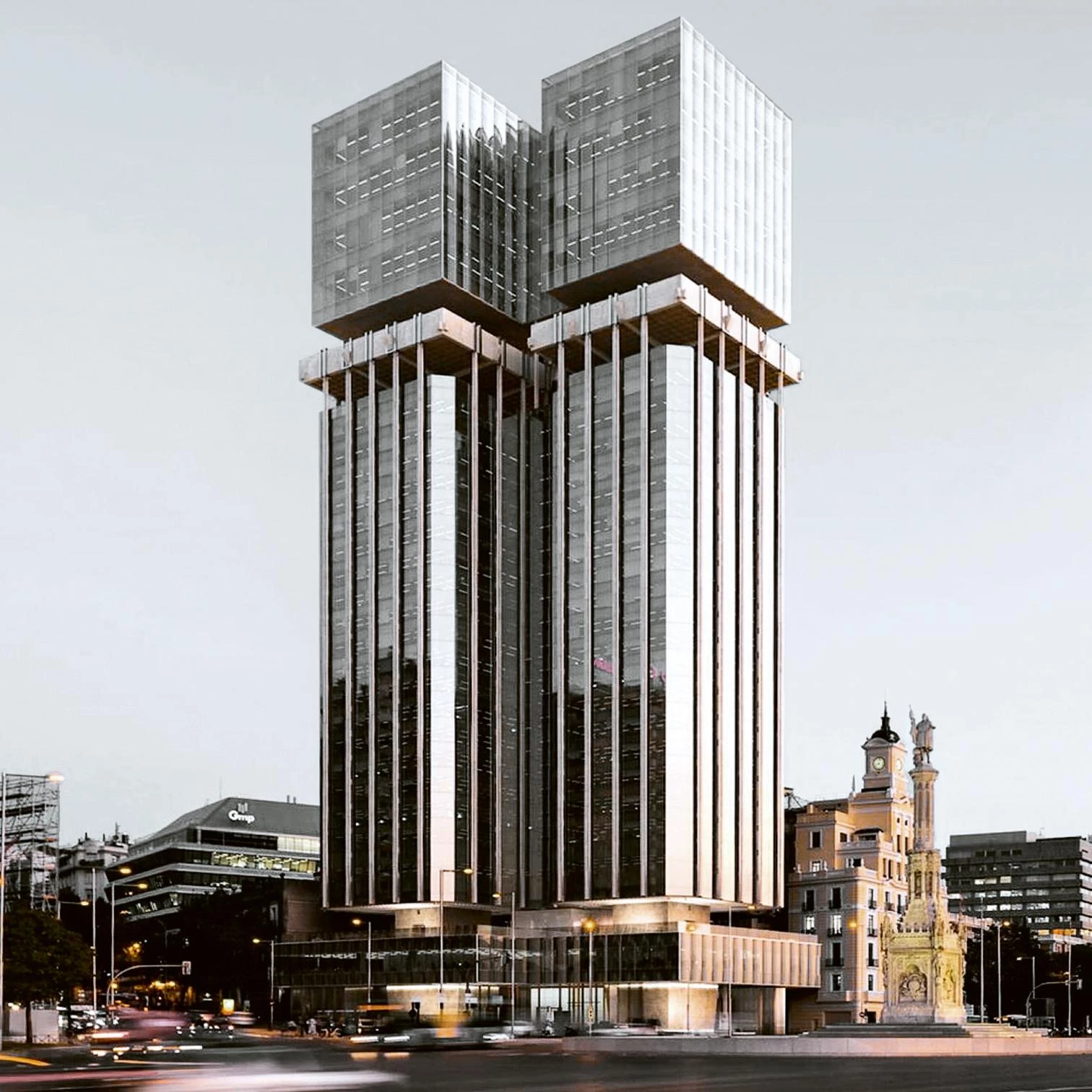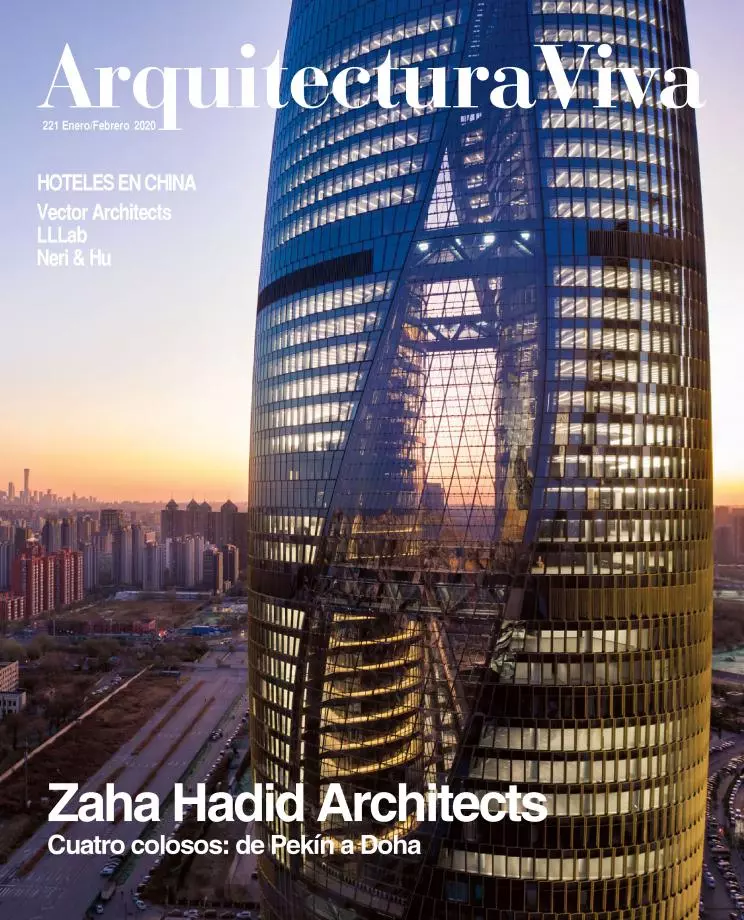
The beauty of the twin high-rises at Madrid’s Plaza de Colón, a 1968 iconic work of the architect Antonio Lamela, lies less in their appearance than in the extraordinary hanging structure that the civil engineer Javier Manterola calculated, and which during construction made the towers look like a modern cyclopean totem. Exaggerated, thus, is the controversy that has been sparked by Luis Vidal’s project, which replaces the postmodern top that the original architect’s son, Carlos Lamela, added in the year 1992 with a pair of cubes respecting the building’s alignment while altering its composition of volumes. To be sure, the polemic does have an interesting side to it, namely the degree to which modern buildings ought to be protected, but it has generally been waged in the form of accusations of very questionable importance and taste, barely concealing the fact that Estudio Lamela and its ex-collaborator Luis Vidal competed – with near-identical proposals – for a commission whose feasibility in any case ultimately depended on increasing the floor area of the building.





